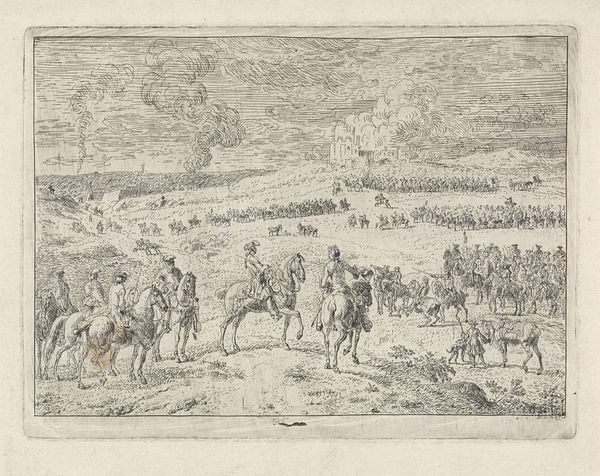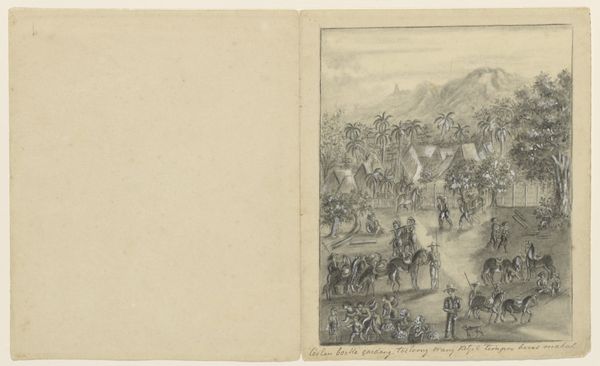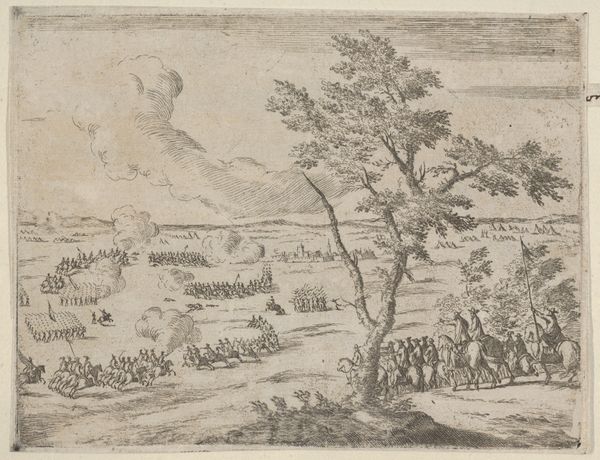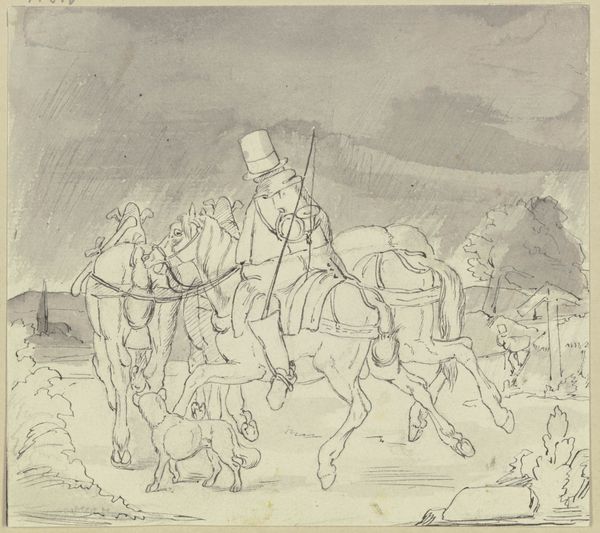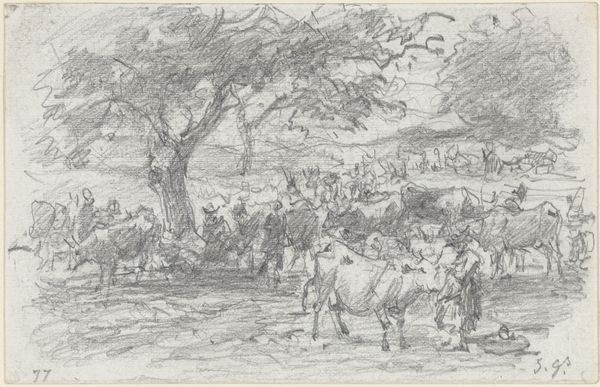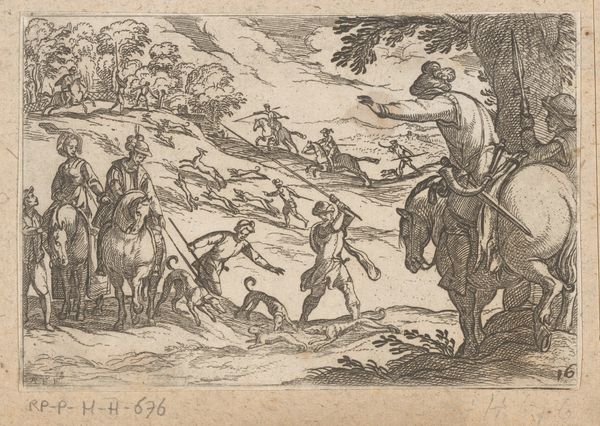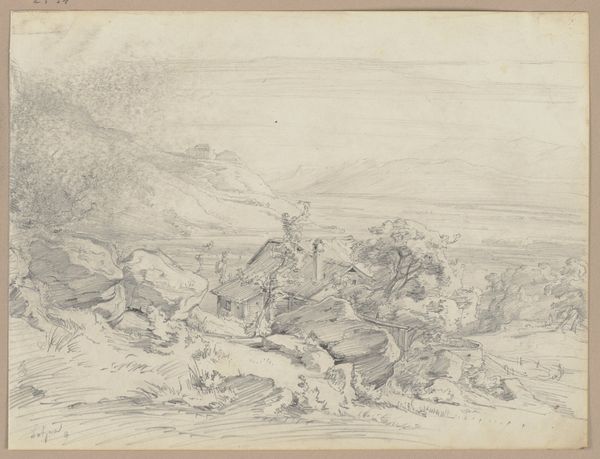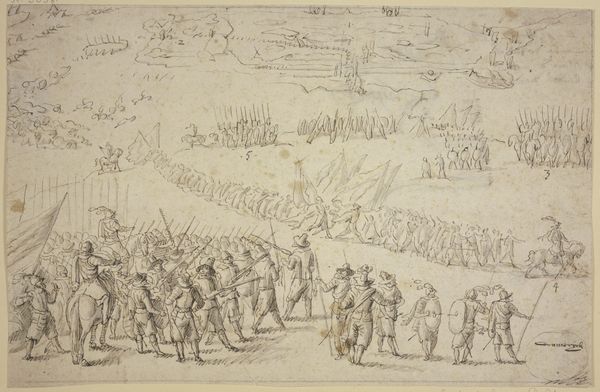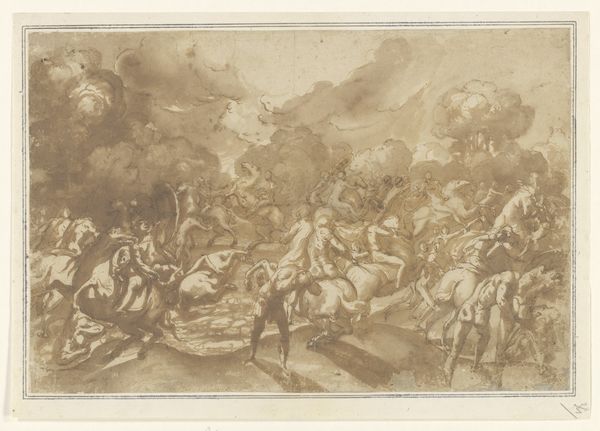
drawing, paper, ink, pencil
#
drawing
#
baroque
#
landscape
#
figuration
#
paper
#
ink
#
pencil
#
genre-painting
#
history-painting
Dimensions: height 268 mm, width 416 mm
Copyright: Rijks Museum: Open Domain
Editor: Here we have "Negotiations between two troops drawn up in battle order," a drawing in ink, pencil and paper by Cornelis de Wael, created sometime between 1602 and 1667. It strikes me as quite a formal, almost stage-managed scene. What stands out to you? Curator: Well, considering De Wael's historical context, it is crucial to examine the role such imagery played in shaping public perception of military and political events. The early to mid-17th century was a time of intense conflict and negotiation across Europe. Do you notice how the composition emphasizes the balance of power? Editor: Yes, the two sides mirroring each other, but what about the rather mundane landscape? Does it diminish the scene’s significance? Curator: Not at all. It might suggest that these "negotiations" occur on contested territory, making the power dynamics visible. Were such depictions, perhaps, intended to legitimize or even glorify specific political stances on war? The very act of drawing and disseminating such images became a political tool. Editor: So, it's less about an objective record and more about constructing a particular narrative, using even landscape for the political imagery? Curator: Exactly! Consider the role that patronage, either from military figures or political entities, would have played. This isn’t merely art, but also an artifact deeply embedded in socio-political structures. How does it change your understanding of the work? Editor: It’s much richer now. I see the image as part of a larger conversation on power and representation, it reveals much about 17th-century politics beyond the literal depiction of a negotiation. Thanks! Curator: Indeed. Looking beyond face value reveals the intentional crafting of a specific image, showing just how crucial it is to understand the art's historical moment.
Comments
No comments
Be the first to comment and join the conversation on the ultimate creative platform.
